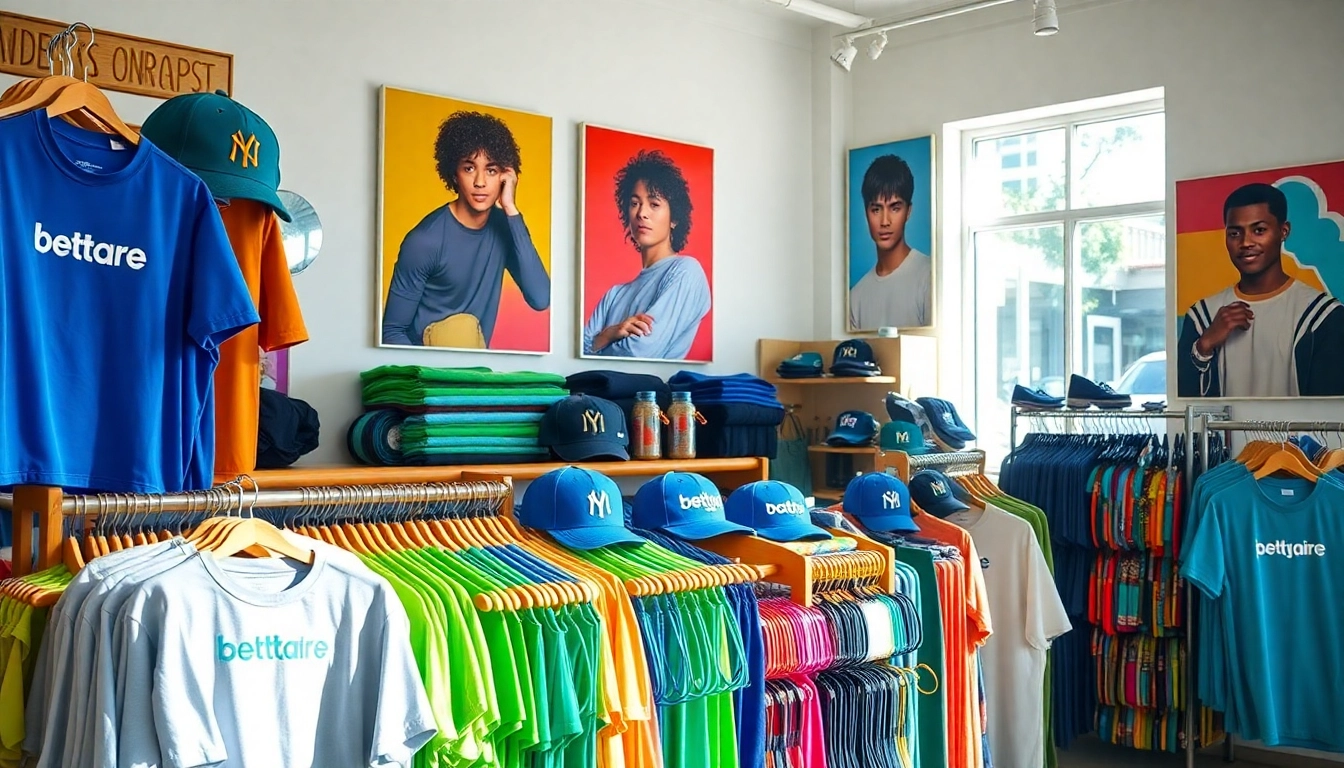Understanding Merchandise and Its Role in Brand Strategy
In today’s competitive landscape, merchandise has emerged as a vital component of any effective brand strategy. The experience a consumer has with a brand transcends traditional marketing methods, weaving into tangible products that not only enhance the brand’s reach but also create lasting emotional connections. Leveraging merchandise as a tool for marketing and brand engagement is essential for businesses aiming to create a memorable brand image and increasing customer loyalty.
What is Merchandise?
Merchandise encompasses any product or service offered to consumers that represents a brand. This can range from clothing, accessories, and physical items to digital products like music and art. Merchandise serves as a tangible representation of a brand’s values and identity, allowing fans and consumers to wear or use products they feel connect them to those values. Particularly for artists and musicians, merchandise can be a powerful expression of artistic identity and a means of connecting with audiences on a personal level.
The Importance of Merchandise in Marketing
Merchandise plays a crucial role in brand marketing strategies for several reasons. It serves as a key revenue stream, especially for artists, bands, and creators. Additionally, merchandise strengthens brand loyalty, as fans are more likely to support brands they feel connected to. It fosters community among fans, creating a sense of belonging. Furthermore, merchandise can function as a marketing tool in itself; high-quality, well-designed products can generate organic advertising as consumers showcase their purchases in public spaces or on social media.
Types of Merchandise You Can Offer
When it comes to merchandise, variety is essential. Here are some common types:
- Apparel: T-shirts, hoodies, hats, and other clothing items that showcase the brand logo or specific designs.
- Accessories: Items like phone cases, jewelry, bags, and stickers are popular for fans who want to display their loyalty more subtly.
- Physical Media: For artists, this can include vinyl records, CDs, or cassette tapes that fans can collect.
- Digital Merchandise: Downloads, exclusive online content, and experiences such as personalized messages or behind-the-scenes access can also serve as merchandise.
- Collectibles: Limited edition items or unique products that encourage fans to purchase them as part of a series or collection.
Creating Your Merchandise Collection
Identifying Your Audience and Their Preferences
The first step in creating an effective merchandise collection is understanding your audience. This involves comprehensive market research and customer feedback analysis. Who are your fans? What are their demographics, interests, and purchasing behaviors? Tools such as surveys, social media engagement, and website analytics can provide valuable insights into what merchandise types resonate with them. Consider leveraging fan opinions during your development process; their enthusiasm for the products can drive sales and foster loyalty.
Designing Unique Merchandise Concepts
Once you understand your audience, the next step is designing merchandise that reflects your brand’s identity while appealing to your customers. Collaboration with artists, designers, or even fans can lead to innovative designs that set your merchandise apart. Use storytelling as a tool—consider how your items can tell a story that resonates with your audience. An effective design process involves iterative feedback loops, ensuring your final products capture attention and align with consumer preferences.
Securing Quality Suppliers for Production
Quality matters in merchandise, and partnering with the right suppliers is essential. Look for manufacturers who can deliver high-quality materials and craftsmanship at scale. When vetting suppliers, consider factors such as their production capabilities, reliability, ethical practices, and alignment with your brand values. It’s also wise to request samples before committing to larger production runs to ensure you’re satisfied with the quality.
Marketing Your Merchandise Effectively
Utilizing Social Media for Merchandise Promotion
Social media platforms are ideal for promoting merchandise and engaging with your audience. Use visually appealing images and brief videos to showcase your products. Display BTS (behind-the-scenes) content that humanizes your brand and shows the creation process. Engage with your audience through polls, contests, or giveaways; these strategies create excitement around new product launches and encourage shares that amplify your messaging.
Collaborating with Influencers to Amplify Reach
Incorporating influencer marketing can significantly extend your merchandise’s reach. Identify influencers who align with your brand values and have a dedicated following in your niche. Collaborate with them to create custom merchandise or sponsor posts that showcase your products. Influencers’ authenticity and credibility can enhance your brand’s visibility, leading to increased interest and sales.
Setting Up Merchandising Events and Promotions
Organizing events such as pop-up shops, merchandise signings, or virtual merch expos provides an immersive shopping experience for fans. Creating limited-time promotions or bundle offers can generate urgency and encourage purchases. Utilizing platforms like Facebook Live, Instagram Live, or TikTok for exclusive release events enhances engagement and allows you to market directly to your audience.
Optimizing Sales Channels for Merchandise
Choosing the Right E-commerce Platforms
In today’s digital landscape, selecting the right e-commerce platform is paramount. Your choice affects user experience and, consequently, conversion rates. Platforms like Shopify, WooCommerce, or Big Cartel provide customizable options that cater to different needs. Evaluate factors such as the ease of use, payment processing options, mobile compatibility, and analytics capabilities when making your choice.
Enhancing In-Store Merchandise Displays
If you have a physical location or participate in pop-up events, how you display merchandise can influence sales. Create eye-catching displays that align with your brand aesthetics and make it easy for customers to interact with the products. Consider using props or thematic designs that evoke emotions related to your brand, thereby enhancing the shopping experience.
Integrating Mobile Solutions for Easy Access
With the rise of mobile commerce, ensuring that your merchandise is accessible via mobile devices is critical. Optimize your online shop for mobile use by employing responsive web design. Consider apps that provide push notifications for promotions or new product launches. Improving mobile user experience can lead to higher engagement and conversion rates.
Measuring the Success of Your Merchandise Strategy
Key Performance Metrics to Track
To refine your merchandise strategy, it’s essential to track relevant performance metrics. Key Performance Indicators (KPIs) include sales revenue, conversion rates, average order value (AOV), and inventory turnover. Additionally, tracking customer acquisition cost (CAC) can illuminate how efficiently you’re converting interest into sales. Implement analytic tools that offer real-time insights on these metrics for better decision-making.
Gathering Customer Feedback for Improvements
Feedback is invaluable for improving your merchandise offerings. Implement surveys and feedback request systems post-purchase to gauge customer satisfaction. Engage with your social media audience to discover their likes and dislikes regarding your products. This feedback loop can reveal areas for enhancement and inspire new product ideas ideas that truly resonate with your audience.
Adjusting Your Strategies Based on Data Analysis
Data-driven decisions are essential to optimizing your merchandise strategy. Analyze your performance metrics and customer feedback to identify trends and patterns. Are certain products more popular than others? Is there a specific demographic purchasing a lot? Tailor your merchandise collection and marketing strategies based on these insights to improve engagement and sales consistently.



